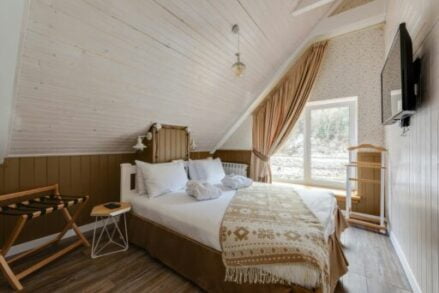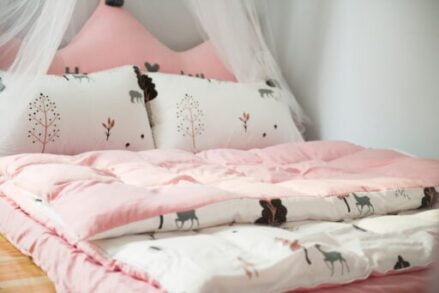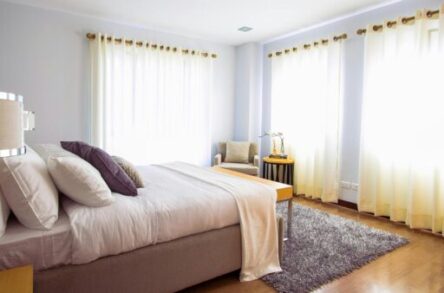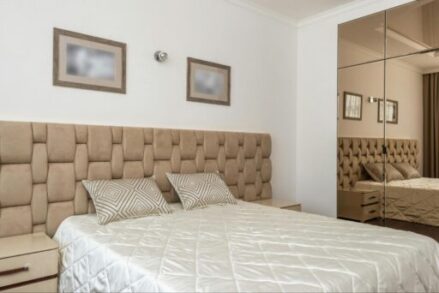Introduction
Bedding rituals have been a significant part of various cultures throughout history. These ceremonies, rich in tradition and symbolism, mark important life events and transitions. At Cozy Bed Quarters, we explore the intricate details of these rituals, shedding light on their historical context, cultural significance, and how you can incorporate these meaningful practices into your own life. This article delves into the essence of bedding rituals, providing a comprehensive understanding of their importance.

Understanding Bedding Rituals
What is a Bedding Ritual?
A bedding ritual is a ceremonial practice that involves the preparation and presentation of a bed for significant occasions. These rituals often symbolize new beginnings, purity, and the intimate bond shared between individuals. From wedding nights to special holidays, bedding rituals vary across cultures but share a common thread of celebrating life’s important moments.
Historical Context of Bedding Rituals
Bedding rituals have deep roots in history. They were often intertwined with cultural and religious practices, symbolizing various aspects of life, such as fertility, prosperity, and the sanctity of marriage. Understanding these historical contexts can give us a deeper appreciation of these traditions and how they have evolved over time.
Wedding Night Bedding Ceremony
Historical Background
One of the most well-known bedding ceremonies is the wedding night ritual. Historically, this ceremony was an essential part of the wedding festivities. It symbolized the consummation of the marriage and the start of a new chapter for the couple.
Traditions Around the World
- Europe: In medieval Europe, it was common for guests to accompany the newlyweds to their bedroom, offering blessings and good wishes. This practice, though rare today, emphasized the community’s role in the couple’s union.
- Asia: In many Asian cultures, the bedding ceremony is rich with symbolism. For instance, in China, the bed is often prepared with specific colors and items believed to bring good luck and fertility to the couple.
- Middle East: In Middle Eastern cultures, the wedding night is often marked by elaborate preparations and rituals, including the use of perfumed oils and specific bedding arrangements to ensure a harmonious start to the marriage.
Modern Bedding Rituals
Creating a Special Ambience
In contemporary times, bedding rituals have evolved but still hold significant meaning. Creating a special atmosphere in the bedroom can make any occasion memorable. Here are some tips to enhance your bedding ritual:
- Choose Comfortable Bedding: Invest in high-quality sheets and pillows that ensure a good night’s sleep.
- Use Scented Candles: Light scented candles to create a relaxing and romantic environment.
- Play Soft Music: Soft, calming music can enhance the mood and make the experience more enjoyable.
Seasonal Bedding Rituals
Different seasons call for different bedding practices. Here are some seasonal rituals you can incorporate:
- Spring and Summer: Use lightweight and breathable materials like cotton or linen. Bright colors and floral patterns can bring a fresh, vibrant feel to your bedroom.
- Autumn and Winter: Opt for warmer materials such as flannel or wool. Earthy tones and cozy blankets can make your bedroom a comfortable retreat from the cold.
Cultural Significance of Bedding Rituals
Symbolism in Bedding Traditions
Bedding rituals often carry deep symbolic meanings. They can represent purity, fertility, prosperity, and even protection against evil spirits. Understanding these symbols can add a layer of depth to your own bedding practices.
The Role of Community
In many cultures, bedding rituals are a communal affair. Family and friends often play a significant role, offering their support and blessings. This communal aspect highlights the importance of social bonds and collective well-being.
How to Create Your Own Bedding Ritual
Personalize Your Space
Creating your own bedding ritual can be a fulfilling experience. Personalize your space to reflect your tastes and preferences. Here are some ideas:
- Select Favorite Colors and Patterns: Choose bedding that matches your personal style and makes you feel comfortable.
- Incorporate Sentimental Items: Add items that hold sentimental value, such as a handmade quilt or a cherished pillow.
- Set a Routine: Establish a bedtime routine that includes preparing your bed. This can signal to your body that it’s time to unwind and relax.
Practical Tips for a Relaxing Bedding Ceremony
- Keep It Clean: Ensure your bedding is clean and fresh. Regularly wash your sheets and pillowcases to maintain a hygienic sleeping environment.
- Declutter Your Bedroom: A clutter-free bedroom can promote better sleep and reduce stress.
- Adjust Lighting: Use soft, ambient lighting to create a calming atmosphere.
Seasonal Bedding Rituals for Modern Homes
Adapting bedding rituals to the seasons can make your bedroom a comfortable and inviting space all year round. Here are some tips:
- Spring: Freshen up your bedding with light, breathable fabrics and pastel colors. Incorporate floral patterns to celebrate the season of renewal.
- Summer: Opt for cool, crisp sheets made of natural fibers like cotton or linen. Choose light colors and minimalistic designs to keep your bedroom cool and serene.
- Autumn: Transition to warmer bedding with cozy blankets and flannel sheets. Earthy tones like browns, oranges, and reds can bring the warmth of autumn into your bedroom.
- Winter: Create a cozy retreat with heavy comforters, wool blankets, and plush pillows. Deep, rich colors can add a sense of warmth and comfort during the colder months.
Cultural Significance of Bedding Rituals
Symbolism in Bedding Traditions
Bedding rituals often carry deep symbolic meanings. They can represent purity, fertility, prosperity, and even protection against evil spirits. Understanding these symbols can add a layer of depth to your own bedding practices.
The Role of Community
In many cultures, bedding rituals are a communal affair. Family and friends often play a significant role, offering their support and blessings. This communal aspect highlights the importance of social bonds and collective well-being.
How to Create Your Own Bedding Ritual
Personalize Your Space
Creating your own bedding ritual can be a fulfilling experience. Personalize your space to reflect your tastes and preferences. Here are some ideas:
- Select Favorite Colors and Patterns: Choose bedding that matches your personal style and makes you feel comfortable.
- Incorporate Sentimental Items: Add items that hold sentimental value, such as a handmade quilt or a cherished pillow.
- Set a Routine: Establish a bedtime routine that includes preparing your bed. This can signal to your body that it’s time to unwind and relax.
Practical Tips for a Relaxing Bedding Ceremony
- Keep It Clean: Ensure your bedding is clean and fresh. Regularly wash your sheets and pillowcases to maintain a hygienic sleeping environment.
- Declutter Your Bedroom: A clutter-free bedroom can promote better sleep and reduce stress.
- Adjust Lighting: Use soft, ambient lighting to create a calming atmosphere.
Incorporating Bedding Rituals into Modern Life
Daily Bedding Rituals
Even without special occasions, you can incorporate small rituals into your daily life to make your bedtime more enjoyable:
- Morning Ritual: Make your bed each morning. This simple act can start your day on a positive note and keep your bedroom looking tidy.
- Evening Ritual: Take a few minutes each night to prepare your bed for sleep. Fluff your pillows, straighten your sheets, and add any personal touches that make you feel relaxed.
Special Occasion Bedding Rituals
For birthdays, anniversaries, or other special events, consider creating a unique bedding ritual:
- Anniversary Ritual: Recreate the bedding ceremony from your wedding night. Use the same colors, scents, and decorations to bring back fond memories.
- Birthday Ritual: Treat yourself or your loved one to a luxurious bedding experience. Use satin sheets, sprinkle rose petals, and light candles to create a special atmosphere.
Conclusion
Bedding rituals are more than just traditions; they are a way to connect with our heritage and enhance our well-being. Whether you’re preparing for a special occasion or simply looking to improve your nightly routine, incorporating these rituals can bring a sense of peace and comfort to your life.
At Cozy Bed Quarters, we celebrate the art of bedding rituals and their timeless appeal. Explore our blogs for more tips and insights into creating the perfect bedroom experience.
For further reading, you may find these external resources helpful:












